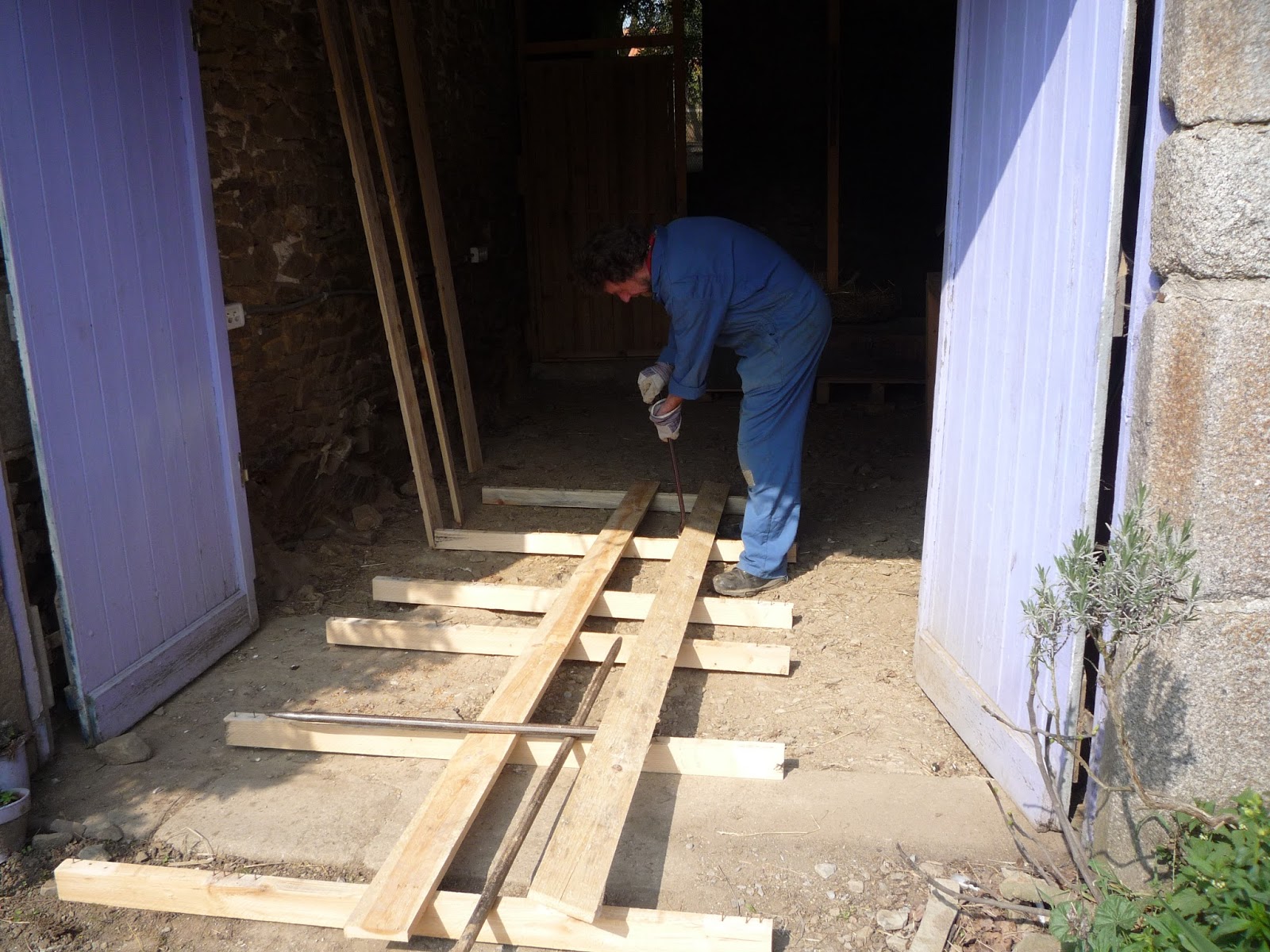When we decided to
renovate our house here in France we chose to recuperate as much
material as possible. This because it would be in keeping with both our
philosophy and the building; there was such a huge and
freely available supply and we were working to a budget. In particular, when looking at glazing we needed quite a volume for the provision of interior light, which was in low supply due to thick walls and few openings.
Introduction
Our house is over 300 years old and is a vernacular longère so it was never intended to have glass windows. Each of these Celtic long houses follow the same architectural pattern, in having adjacent, alternate human and livestock accommodation, so these openings were meant either to give light to the cooking area or air to the animals/birds. At night these were closed with wooden shutters and on cold Winter days with sacking.
As someone had, many years before, lived in one of the human habitations, now our kitchen, we actually had one window, this dating from around the 1930s. So when we came to the question of windows and doors, we just decided to ask at the local joiner’s, where we had already observed the rows of discarded items, some thirty to forty of them, piling up in his car park.
On enquiring with the proprietor we discovered that the windows were waiting to be dumped or burnt. The majority of his business was in making and fitting double-glazed units and those in the yard were the ones he had removed from the houses prior to installation. The proprietor was so happy that we wanted to take some away for our own use, his means of disposal being to take them to the tip (for which he would pay a fee) or he would have to take them into a nearby field and burn them! So we loaded the car up with our chosen windows and over the course of the next few months collected several dozen units, the majority of which were exotic wood and double-glazed. Additionally, I encouraged neighbours and friends with projects of house restoration and greenhouse construction to visit this company and furnish themselves with the valuable free resource, one completed project being the verandah-style greenhouse (read more)
As someone had, many years before, lived in one of the human habitations, now our kitchen, we actually had one window, this dating from around the 1930s. So when we came to the question of windows and doors, we just decided to ask at the local joiner’s, where we had already observed the rows of discarded items, some thirty to forty of them, piling up in his car park.
On enquiring with the proprietor we discovered that the windows were waiting to be dumped or burnt. The majority of his business was in making and fitting double-glazed units and those in the yard were the ones he had removed from the houses prior to installation. The proprietor was so happy that we wanted to take some away for our own use, his means of disposal being to take them to the tip (for which he would pay a fee) or he would have to take them into a nearby field and burn them! So we loaded the car up with our chosen windows and over the course of the next few months collected several dozen units, the majority of which were exotic wood and double-glazed. Additionally, I encouraged neighbours and friends with projects of house restoration and greenhouse construction to visit this company and furnish themselves with the valuable free resource, one completed project being the verandah-style greenhouse (read more)
One thing I should make clear with these windows, is that most of them were in perfect condition, some of the French windows even having keys - apparently many people just wanted to change to UPVC! As expected, very few windows had any frames as these were broken in their removal.
Some supplies of windows and doors we obtained as they were being removed, these, often from nearby towns were elegant old windows with hand-made glass and fine astragals.
For people of our philosophy the opportunity of recuperating these windows and constructing a (softwood) frame to fit them was and is a perfect way of using ‘waste’. Furthermore once the proprietor of the company realised what we needed, he and his men not only tried to carefully retain the frames, handles and keys but also kept a look out for specific sizes and shapes of window and doors!
As mentioned above, another way we got windows was to watch for old houses in the area being refurbished. This way we directly approached the building firms as they were loading the windows up to dump or burn. We were able to obtain some really elegant windows this way, many of which we used for our glass greenhouse (read more).
The one and only drawback of recuperated double glazed units
There is however, a problem with old double-glazed units, like the ones we used in our sitting room. Unfortunately, last year we noticed that one of the windows was beginning to get ‘foggy’ and by the summer of this year it was apparent that it must be changed. By a stroke of good fortune I had recuperated this window with several others from the same contract and in our stable where we store the pallet wood planks I unearthed the twin of the now translucent window.
In the next blog post I will be sharing how to prepare and fit a recuperated window into an existing frame but in the meanwhile here is a film showing our recuperated windows in use in our house and garden.
Thanks for dropping by and please
feel free to share this article, comment, ask questions and if you'd
like to be assured of getting the next post, then sign up to follow this
blog.
All the best, Andy
© Andy Colley 2014






















































